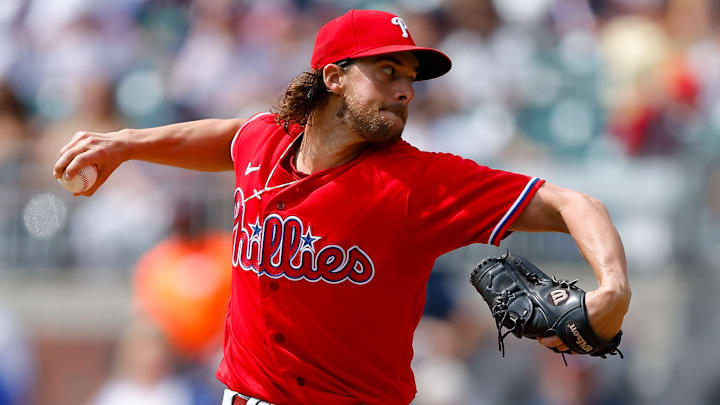Aaron Nola
In one of the first signings of the offseason, Aaron Nola returned to the Phillies on a 7-year, $172 million contract. With an AAV of just under $25 million, Nola signed for less money per year than Cardinals' starter Sonny Gray. Nola probably could've received more money had he chosen to go elsewhere, but if the Cardinals were able to sign Nola to the same deal, this could've been a huge missed opportunity.
Nola's elite strikeout rate headlining the Cardinals' rotation would've marked a change in the pitch-to-contact philosophy to a more swing-and-miss focus. While the front office has made that philosophical change in the bullpen, it remains to be seen if the rotation will have a more strikeout-oriented focus in 2024. With questions about the viability of pitch-to-contact at the forefront of the 2023 Cardinals' struggles, the addition of Nola would've eased doubts for 2024.
While questions about Nola's viability in the future as a frontline ace were ever-present in 2023, as his velocity, strikeout rate, and run prevention took all took concerning dips, there's no doubt the Phillies re-signed him at a bargain deal this offseason. Nola's Postseason performance in 2023 was also very good. In four starts he went 3-1 and gave the Phillies a solid chance to win in each outing. His ability to go deep into Postseason starts is also a rarity, as many starting pitchers are pulled at the first sign of trouble in the playoffs.
Even if his numbers dip a bit from career norms, Nola's new contract would've been an absolute bargain for St. Louis. Of course, he gave Philly a hometown discount, but if the Cardinals come face to face with him in the Postseason like they did in 2022, Cardinal fans may wish the front office had paid a bit extra for Nola this offseason.
